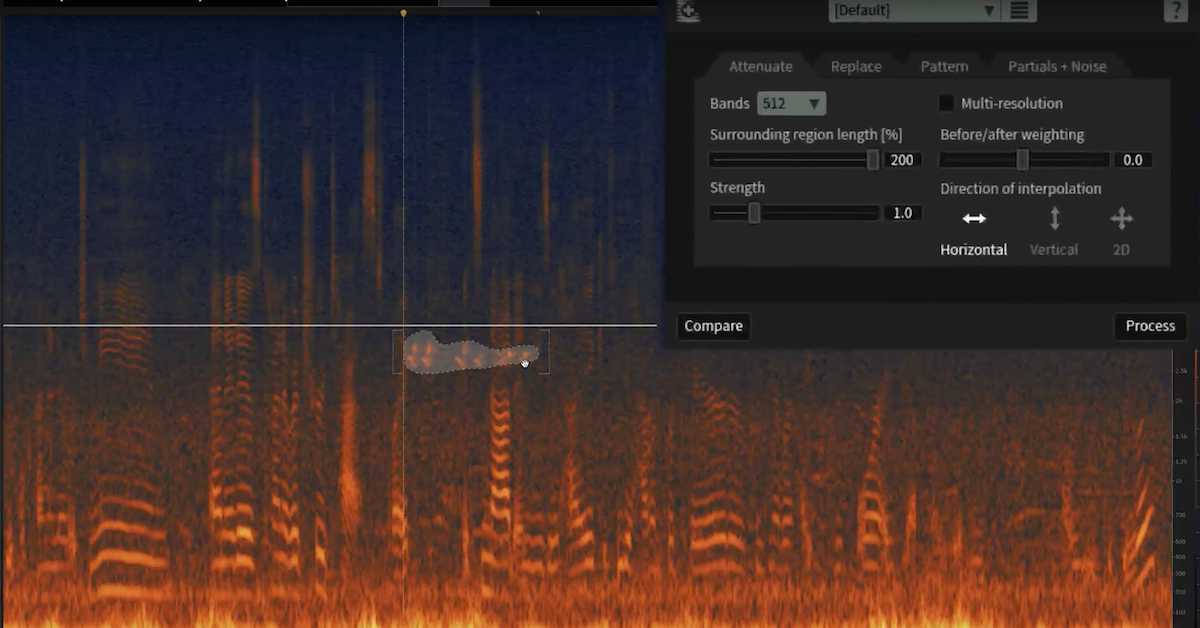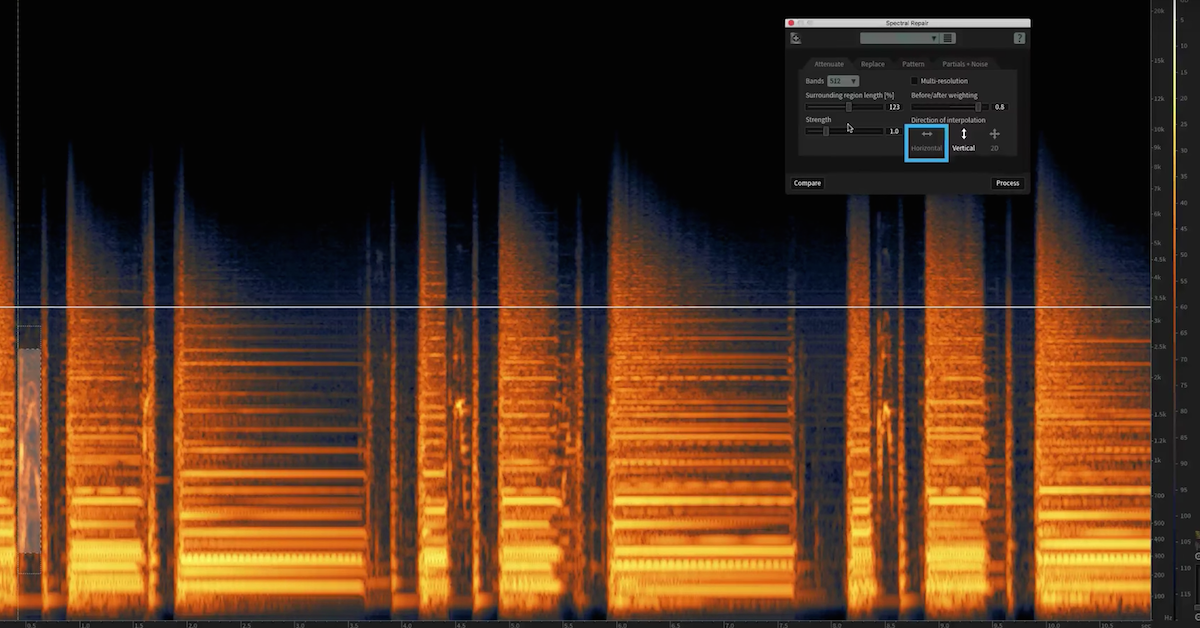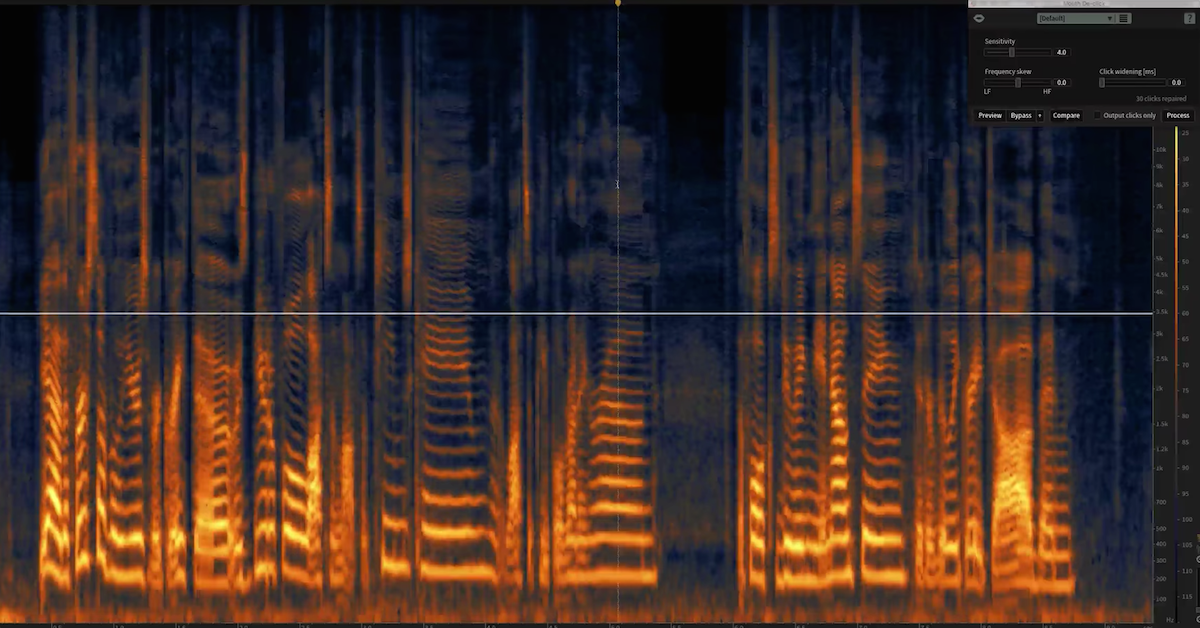Review: RX7 by iZotope
Article Content
It’s no secret that iZotope’s series of RX de-noising and waveform editing products have dominated the market for several years. They are the go-to processing effects for many post-production engineers and editors. That being said, it may be argued that releasing annual or even biennial paid updates without significant improvements is a bit exploitive. Many developers are guilty of this and sadly, this approach is integral to their business model and to the financial detriment of a loyal customer base.
So when RX7 came out, I was immediately suspicious as to the true value and necessity of yet another update. But as I soon discovered, RX7 represents a significant advancement and builds on the areas of artificial intelligence and machine learning in which iZotope seems to be leading the way with other offerings such as the Neutron and Ozone bundles.
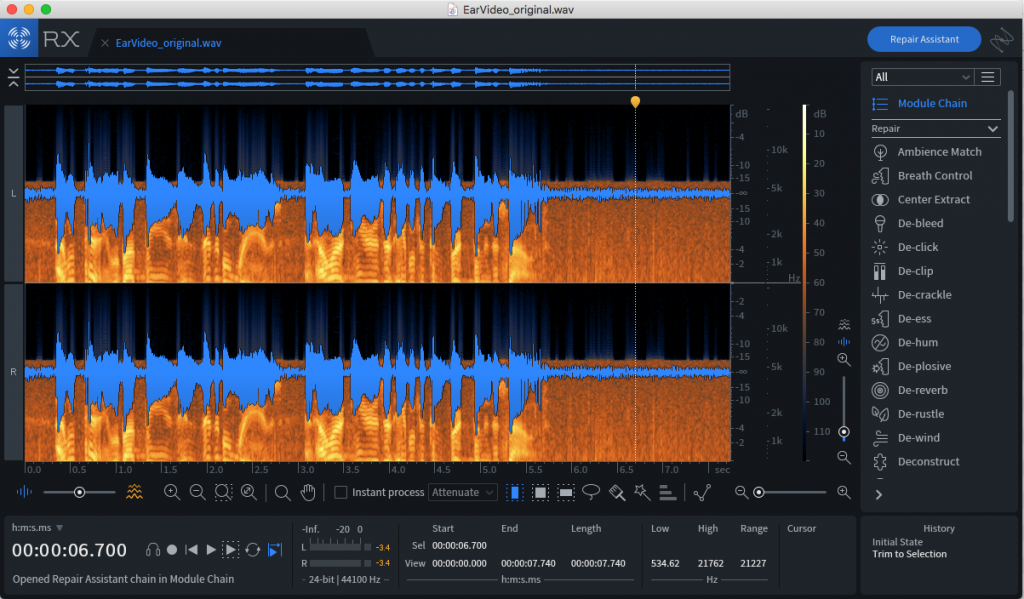
New Features
The Repair Assistant detects problems and suggests three ways to repair the problems, giving you a choice of repair processing effects chains that can be auditioned prior to rendering. You select the file and identify the nature of the material as dialog, music or other so the algorithm can be optimized for that purpose. The intensity or aggressiveness of each processing alternative can be changed overall with the slider just beneath the spectrogram displays.
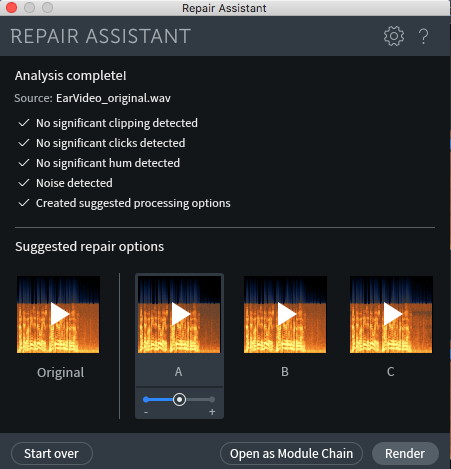
You can mouse over the previews in the interface to see the effects chain that has been applied or click on the [Open as Module Chain] button to edit the effects order, individual parameters, specific frequency ranges to be processed, bypass selected effects or replace, remove or add the effects being used.
The processing by default focuses on clipping, clicks, hum and noise, or you can disable any of these and remove them from the analysis if they seem inappropriate based on the material.
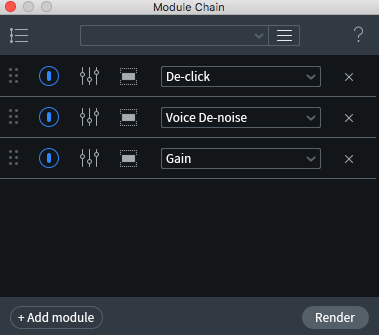
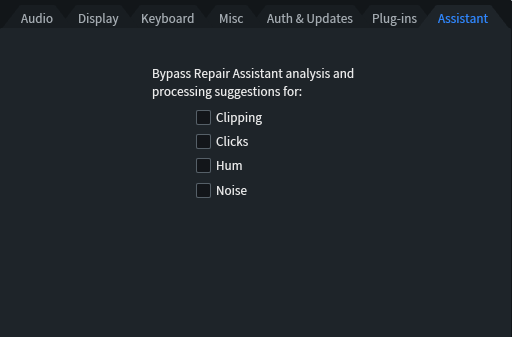
For less experienced users, the Repair Assistant will definitely seem like magic and more experienced users will benefit from a faster workflow and the ability to tweak the settings used in the automated process.
The Music Rebalance feature allows you to change the level of various musical elements in a bounced file. It works surprisingly well. You can also isolate or remove vocals from a mix and it captures similar material from left and right channels as well as the center. Great for creating remixes!
The Dialog Contour effect can change the inflection of spoken words, especially useful for correcting the annoying habit some people have of saying everything in the form of a question?
The Dialogue De-Reverb is similar to past D-reverb setting powered by machine learning to reduce the presence/reverb specifically around dialogue.
RX7 now offers multichannel support up to Dolby Atmos 7.1.2 and Audio Suite versions are available for classic repair effects: Dialogue Isolate, De-rustle, Breath Control and the new Music Rebalance.
Conclusion
Anyone that has ever used iZotope’s RX products in the past does not have to be sold on their utility. They are essential and unparalleled processing effects for audio repair, de-noising, dialog editing, spectral processing and useful in post-production for image-based sound as well as music production. For existing users, the new intelligent processing features will significantly accelerate your workflow, making this upgrade a worthwhile investment.
Check out my other articles, reviews and interviews
Follow me on Twitter / Instagram / YouTube




